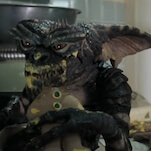Board games substitute cardboard for pixels to emulate retro video game genres

Nostalgia is a powerful force. Old video games seem to be constantly finding new life through reboots or re-releases on modern systems, drawing back players with fond memories of Asteroids or Final Fantasy Tactics and making new fans. This trend even reaches into the frontier of board games, where some aim to capture the feel of early arcade and console games without bothering to license any property in particular.
Whatever your old-school genre of choice is, there seems to be a cardboard version to play. Soda Pop Miniatures’ Super Dungeon Explore resembles hack ’n’ slash games like Gauntlet and Diablo and uses mechanics similar to the board game Descent. One player takes on the role of The Dark Consul, controlling the dungeon’s monsters and their spawn points, trying to make treasure as hard as possible to collect for the heroes. The other players must mow through the Consul’s hordes and destroy all the spawn points in order to face down the final boss.
There’s more strategy involved in playing Super Dungeon Explore than the video games it’s based on. Rather than just relying on button mashing, you’re required to plot out your moves and carefully use your attacks to avoid being overwhelmed. But it also has a problem found in so many video games: The characters are highly unbalanced. Playing as the rogue lets you easily bypass the waves of monsters, while the Paladin’s impressive healing powers can undo most attacks and even give allies extra uses of their special abilities. Play with different classes, and you’re basically on hard mode.
Sirlin Games’ Puzzle Strike is based on the gameplay of Capcom’s Super Puzzle Fighter II Turbo (and designed by David Sirlin, who worked on that game’s HD remake), which had characters from Street Fighter and Darkstalkers matching gems to power their martial arts. All of the game’s adorably illustrated original characters have their own set of special moves that appear on chips, alongside a bunch of general use move chips that players buy from a centralized bank.
Play resembles a deck-building game like Dominion, except instead of having a deck, you have a bag of chips from which you randomly draw and fill up with bought chips. When things go wrong, wound chips—completely useless tiles—get added to your bag and muddy up future turns by adding junk to your hand. Just like the Capcom game, if your board fills up with gems you lose. Many abilities let you fling gems at opponents, who in turn have ways to send them back or just destroy them.
Players on the brink of gem-filled death get to draw more chips to look for an out, meaning it can be the right move to dance on the edge of defeat for the chance to buy better chips and offload your gems. The high number of characters and chip options provide plenty of variety, but the game can be overlong, especially when you’re playing with the maximum of four players and everyone is spreading the pain around rather than focusing on eliminating a single competitor. Even with a steady drip of gems onto each player’s board every turn, there just seems to be too many ways for a reasonably cautious player to keep them from adding up.
Given its inspiration, I wasn’t surprised that Level 99 Games’ Pixel Tactics was the most complex of the ones I played. The card game emulates turn-based strategy games like Final Fantasy Tactics, with players fielding an army of heroes whose abilities depend on which of three rows they’re standing in.







































